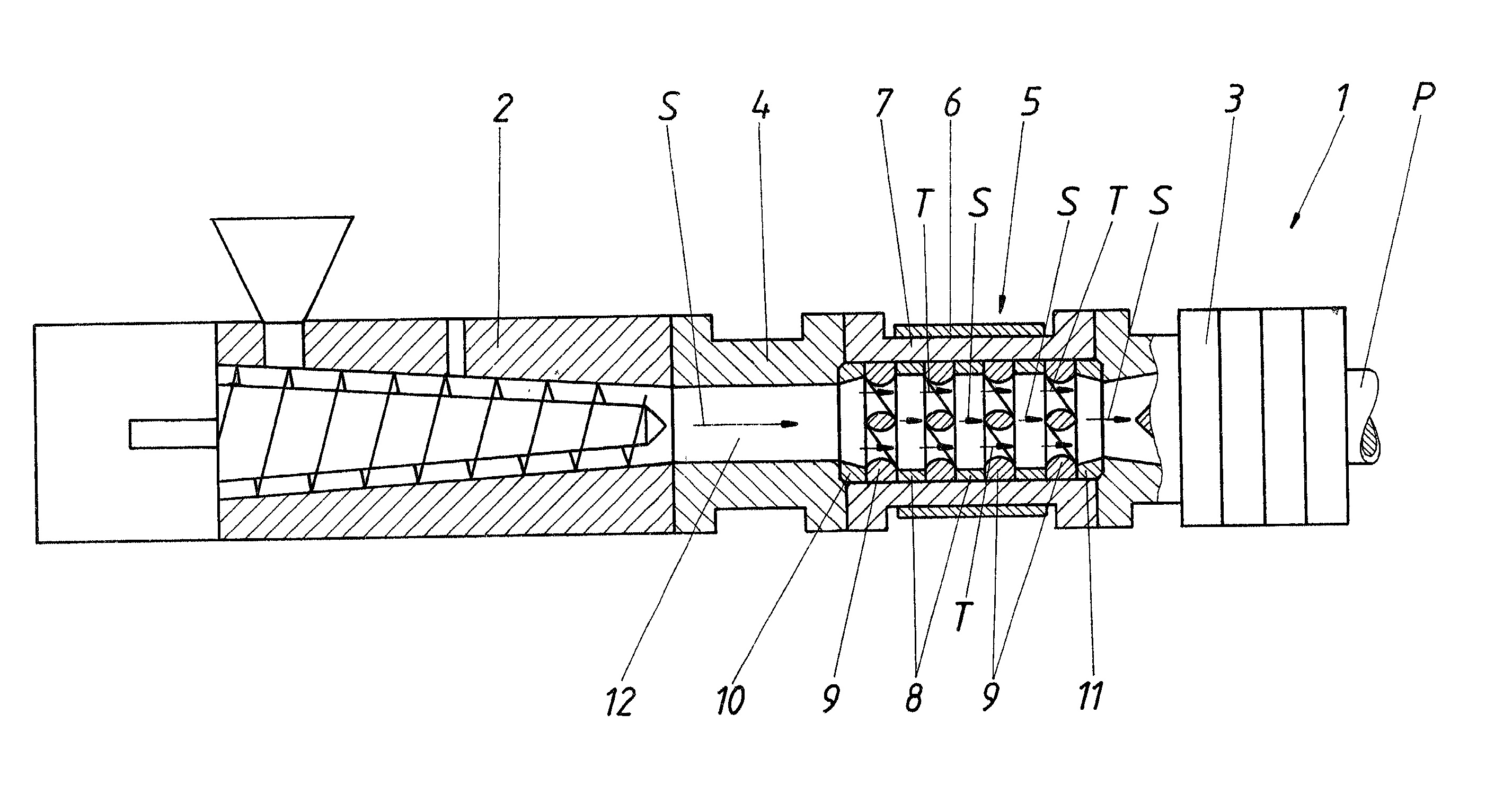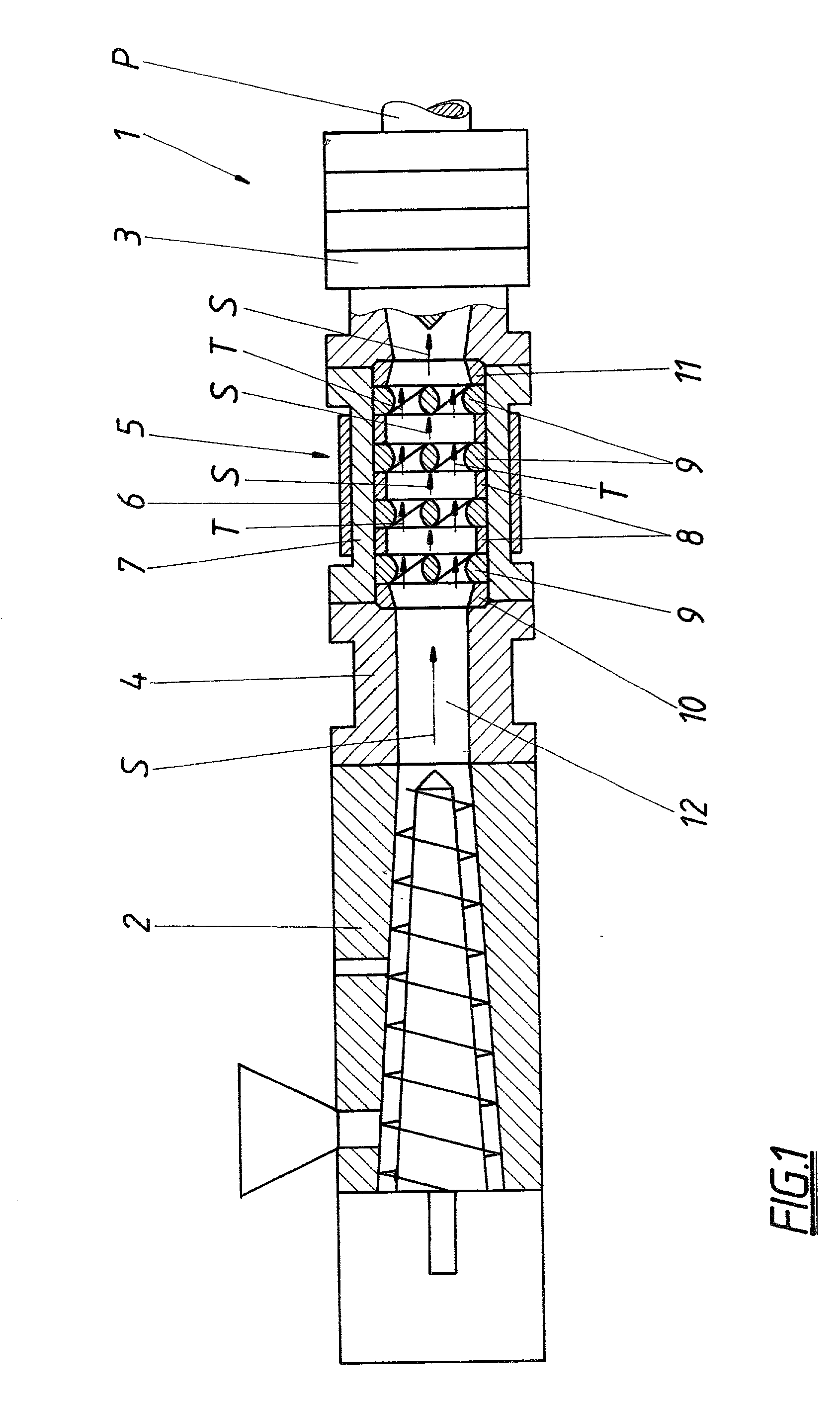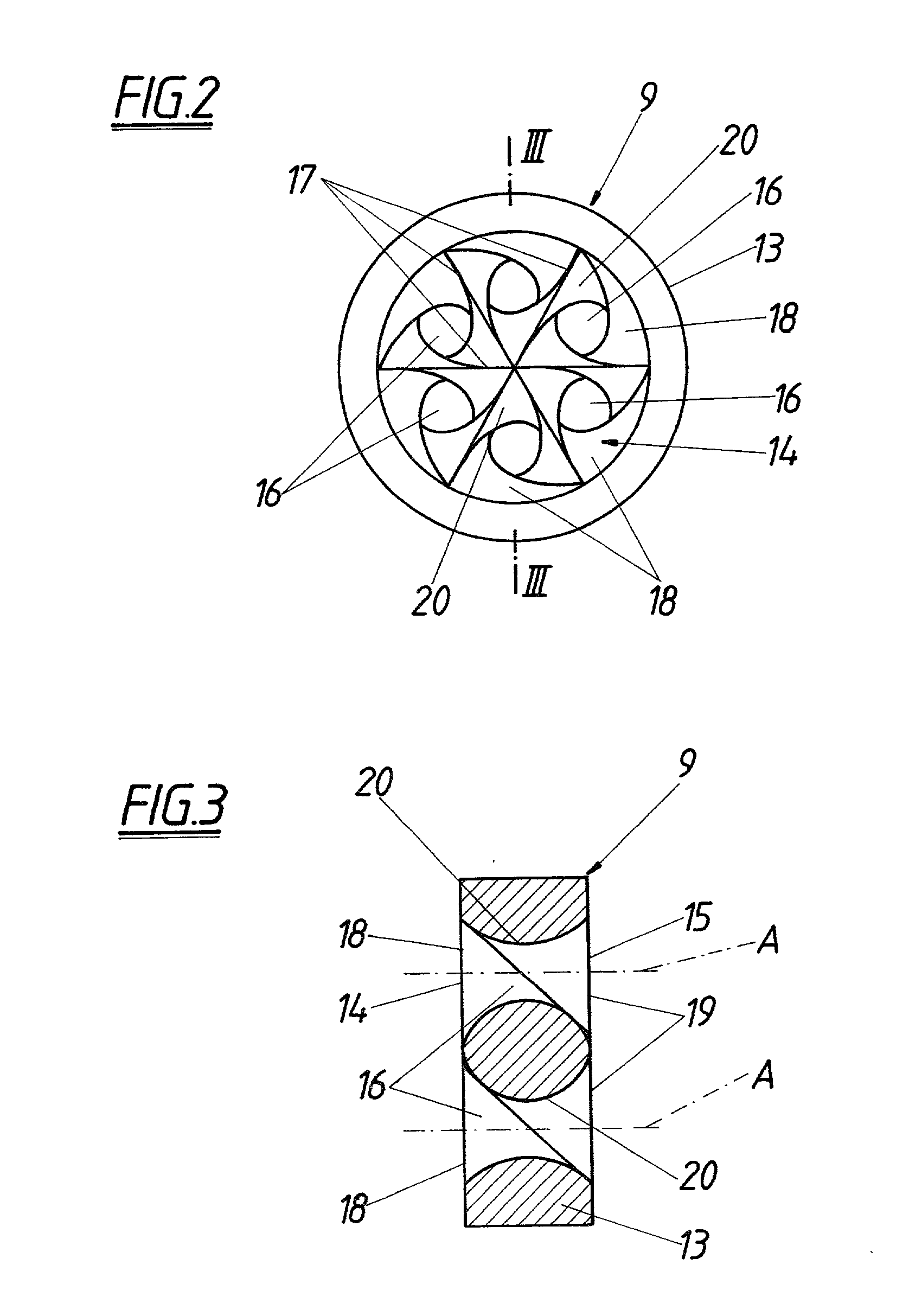Method for thoroughly mixing a melt flow made of plastic
a technology of plastic and melt flow, which is applied in the direction of clay mixing apparatus, mixing/kneading with horizontally mounted tools, transportation and packaging, etc. it can solve the problems of insufficient time, thermal damage to the sensitive melt, and deviations in wall thickness, so as to reduce the configuration effort of dies and reduce the sensitivity to different extruders. , the effect of reducing the deviation of the wall thickness
- Summary
- Abstract
- Description
- Claims
- Application Information
AI Technical Summary
Benefits of technology
Problems solved by technology
Method used
Image
Examples
Embodiment Construction
[0018] An extrusion plant 1, which is exhibited only in part, for the production of profiles P from polyvinyl chloride (PVC) comprises an extruder 2 and an extrusion die 3, with a mixing apparatus 5 for the thorough mixing of the melt flow S made of PVC being arranged between the extrusion die 3 and an adapter 4 connected to the extruder 2. The mixing apparatus 5 comprises a housing 7 which is heatable by way of a heating device 6, in which housing are disposed successively behind one another four mixers 9 by interposing spacer rings 8, which mixers can be integrated in the flow channel 12 for the melt flow S via an inlet element 10 and an outlet element 11.
[0019] The mixers 9 each consist of a disk-like mixing body 13 which forms mixing channels as a twisting device which extend axially from an inlet 14 to an outlet 15 and comprise a substantially triangular cross section twisting in the direction of the channel axis A. Inlet 14 and outlet 15 are subdivided by radial walls 17 into ...
PUM
| Property | Measurement | Unit |
|---|---|---|
| rotational angle | aaaaa | aaaaa |
| melt flow | aaaaa | aaaaa |
| homogeneity | aaaaa | aaaaa |
Abstract
Description
Claims
Application Information
 Login to View More
Login to View More - R&D
- Intellectual Property
- Life Sciences
- Materials
- Tech Scout
- Unparalleled Data Quality
- Higher Quality Content
- 60% Fewer Hallucinations
Browse by: Latest US Patents, China's latest patents, Technical Efficacy Thesaurus, Application Domain, Technology Topic, Popular Technical Reports.
© 2025 PatSnap. All rights reserved.Legal|Privacy policy|Modern Slavery Act Transparency Statement|Sitemap|About US| Contact US: help@patsnap.com



